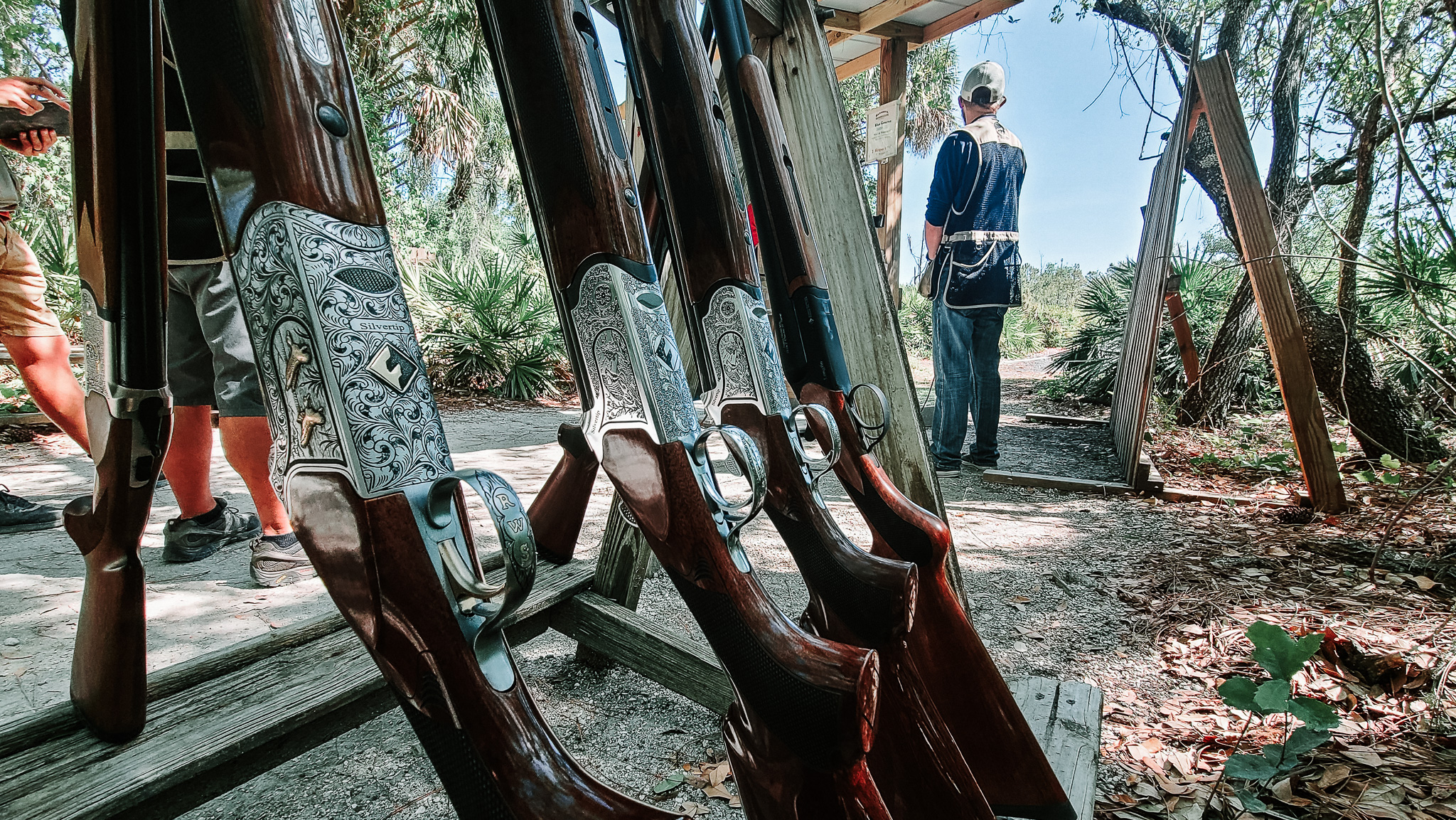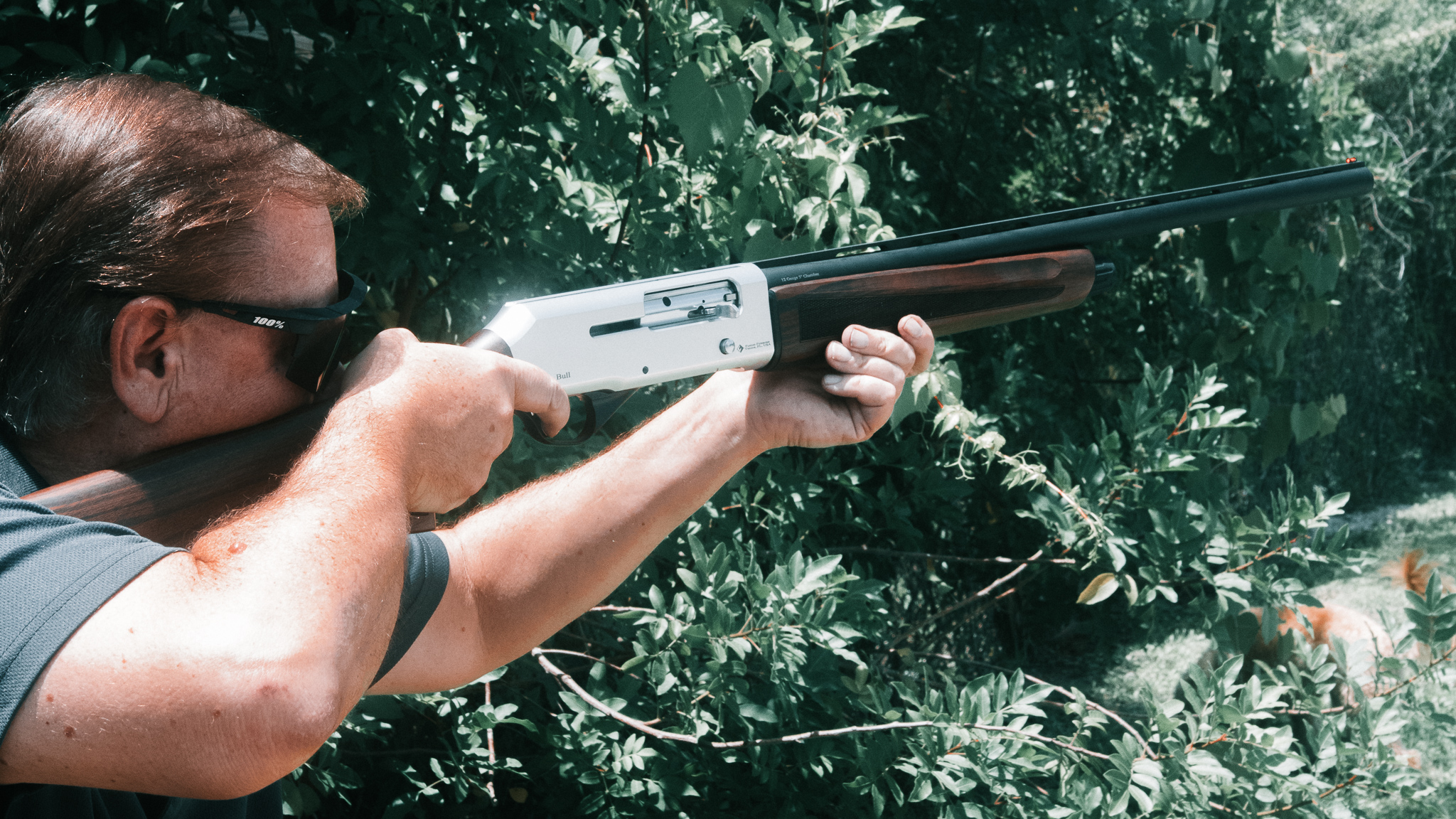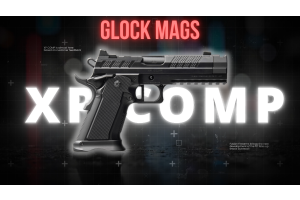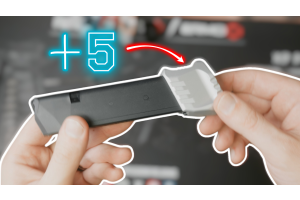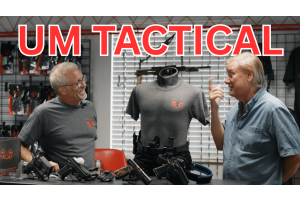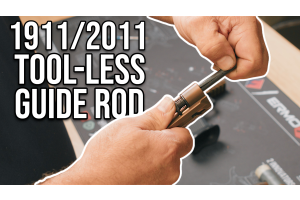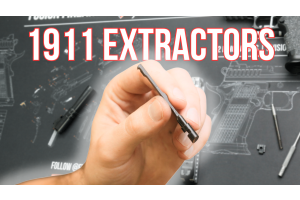
Trap Shooting with Different Shotgun Types: A Comprehensive Guide
0%
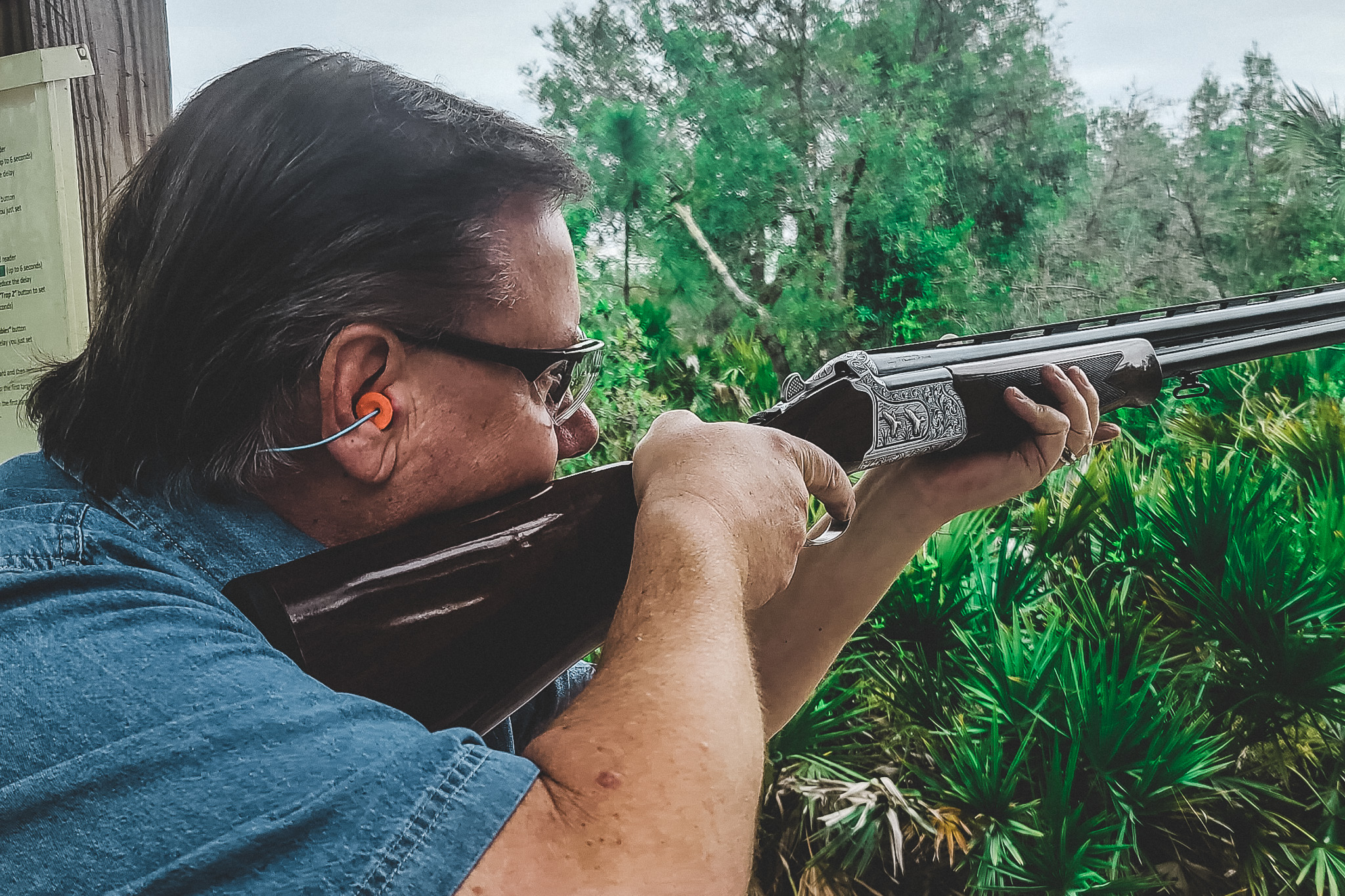
Key Takeaways:
- Over-and-under (O/U) and semi-automatic shotguns are preferred for trap shooting due to their precision, rapid-fire capability, reduced recoil, and increased shot capacity.
- Pump-action shotguns offer reliability, affordability, and a fun challenge but may not be ideal for trap shooting.
- Consider barrel length and choke selection for optimal shot pattern and range.
- Explore sighting options like bead sights and adjustable ribs for a clear sight picture.
- Stock design impacts shooting position and comfort; choose a well-fitted stock.
- Practice recoil management techniques to improve control and reduce fatigue.
- Personal preference plays a significant role in choosing the right shotgun for trap shooting.
- Enjoy the excitement and growth trap shooting offers, regardless of the chosen shotgun type.
Introduction
Trap shooting is a thrilling and popular sport that tests a shooter's precision, focus, and timing. Whether you are a seasoned trap shooter or a beginner looking to delve into this exciting activity, understanding the various shotgun types available and their suitability for trap shooting can significantly enhance your performance. In this comprehensive guide, we will explore the different shotgun types commonly used in trap shooting, highlighting their unique features, advantages, and considerations. From break-action shotguns to semi-automatics and pump-actions, we will provide valuable insights to help you make an informed choice when selecting a shotgun for trap shooting.
Break-Action Shotguns:
Break-action shotguns are highly regarded among trap shooters for their exceptional reliability and precision. These shotguns are characterized by their unique break-open design, where the barrel(s) pivot down and away from the receiver for reloading and unloading. In the world of trap shooting, break-action shotguns offer several advantages that make them a popular choice among enthusiasts. In this section, we will delve into the two main types of break-action shotguns used in trap shooting: over-and-under (O/U) and side-by-side (SxS). We will explore their key features, advantages, and potential drawbacks, as well as important considerations such as barrel length, choke options, and stock design.
Over-and-Under Shotguns (O/U)
Over-and-under shotguns feature two barrels stacked vertically, with the upper barrel firing first followed by the lower barrel. This design offers several advantages for trap shooting:
Precise Point of Impact:
O/U shotguns are renowned for their exceptional point-of-impact consistency. The vertically stacked barrels align with the shooter's eye, providing an intuitive and natural sight picture. This consistency aids in accurate target acquisition and shot placement, a crucial aspect of successful trap shooting.
Choke Options:
O/U shotguns typically offer interchangeable choke tubes, allowing shooters to tailor their shot spread and pattern to match the varying target distances encountered in trap shooting. The versatility of choke selection enables shooters to adapt to different trap field conditions, maximizing their chances of breaking targets consistently.
Balance and Handling:
O/U shotguns are known for their excellent balance, which contributes to improved swing and follow-through during target engagement. The well-balanced nature of these shotguns allows for smooth and controlled barrel movement, essential for tracking fast-flying clay targets.
However, it's worth noting that O/U shotguns can be more expensive compared to other types. Additionally, the limited shell capacity of two rounds may require more frequent reloading, which can impact the rhythm and flow of shooting in trap competitions.
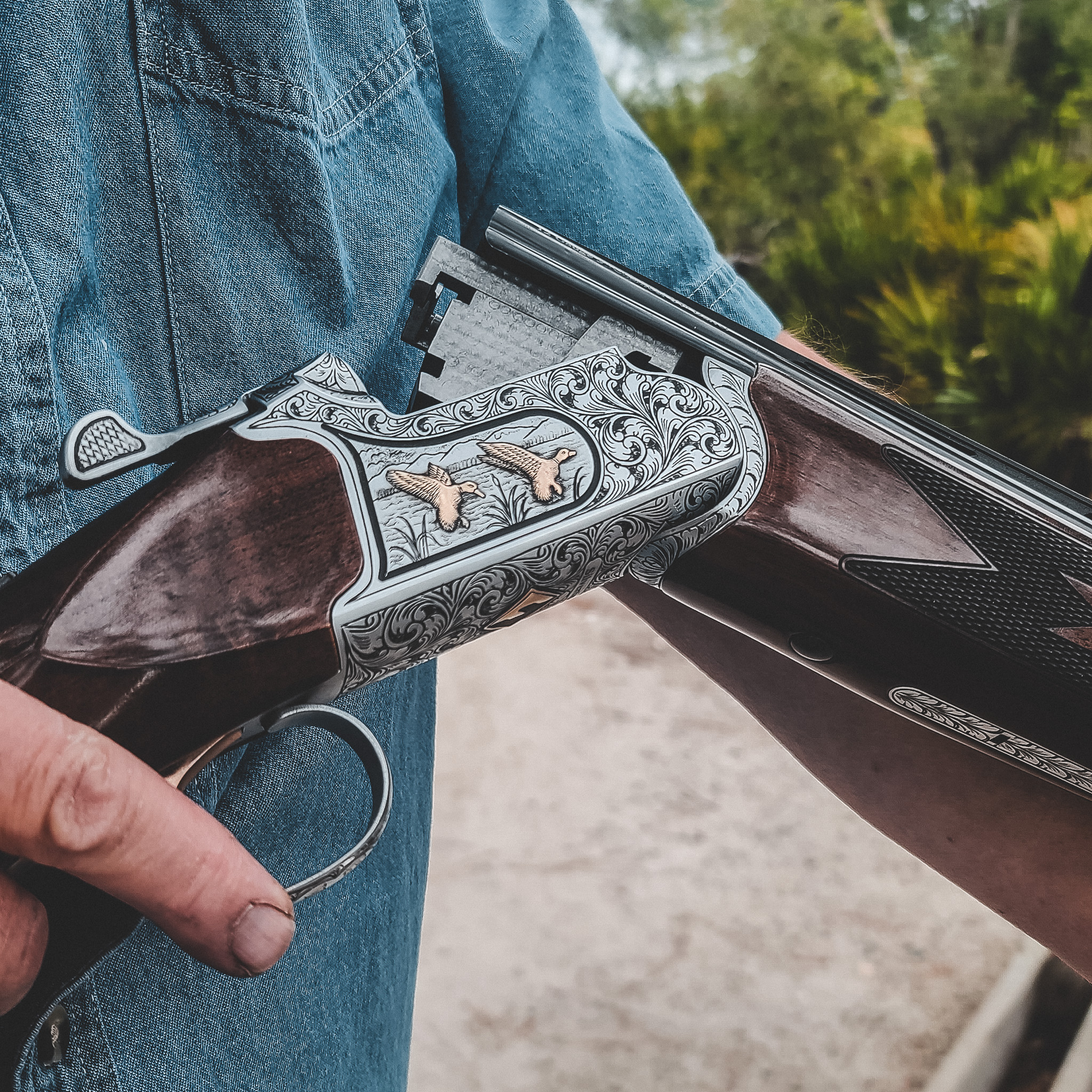

Side-by-Side Shotguns (SxS)
Side-by-side shotguns feature two barrels aligned horizontally, with each barrel firing simultaneously. While less common in trap shooting compared to O/U shotguns, SxS shotguns offer distinct characteristics that appeal to certain shooters:
Wide Field of View:
The side-by-side configuration provides a wider field of view, allowing shooters to have a broader perspective of the trap field. This can be advantageous when tracking multiple targets or engaging fast-moving clays.
Classic Appeal:
Many trap shooting enthusiasts appreciate the traditional aesthetics of side-by-side shotguns. Their elegant and timeless design can evoke a sense of nostalgia and add a touch of sophistication to the shooting experience.
However, SxS shotguns may have a different point of impact for each barrel, requiring shooters to adapt their aiming technique accordingly. The wider profile of side-by-side shotguns can also affect the swing dynamics, demanding greater attention to maintaining a smooth and consistent swing.
Considerations for Trap Shooting When selecting a break-action shotgun for trap shooting, several factors should be considered:
Barrel Length:
The barrel length can influence the overall weight and balance of the shotgun. For trap shooting, longer barrels, typically between 28 to 32 inches, are commonly preferred. Longer barrels offer a longer sighting plane, aiding in target acquisition and consistent follow-through.
Choke Selection:
Choosing the right choke(s) is crucial for optimizing shot pattern and spread. In trap shooting, tighter chokes such as modified or full are commonly used to maintain a denser shot pattern at longer distances. However, specific choke preferences can vary depending on personal shooting style and the specific trap discipline being pursued.
Stock Design:
The stock of a break-action shotgun plays a significant role in comfort, fit, and stability during trap shooting. The stock should be ergonomically designed to provide a comfortable grip and proper alignment with the shooter's eye. Adjustable stocks offer the advantage of customizing the fit to individual preferences, ensuring optimal shoulder placement and sight alignment.
Recoil Management:
Trap shooting involves shooting numerous rounds, and managing recoil is essential for maintaining accuracy and reducing shooter fatigue. Break-action shotguns, although generally known for their mild recoil, can benefit from recoil reduction features such as recoil pads, weighted stocks, or gas-operated systems. These elements help absorb and distribute recoil energy, resulting in a more pleasant shooting experience.
Personal Preference:
Ultimately, personal preference plays a significant role in selecting a break-action shotgun for trap shooting. Each shooter may have individual preferences regarding weight, balance, aesthetics, and brand reputation. It is important to handle and test different models to find a shotgun that feels comfortable and inspires confidence.
Conclusion
Break-action shotguns, including the popular over-and-under and side-by-side designs, offer trap shooters unparalleled reliability and precision. The over-and-under configuration excels in providing a consistent point of impact, versatility in choke selection, and excellent balance, while the side-by-side design offers a wide field of view and classic appeal. When selecting a break-action shotgun for trap shooting, factors such as barrel length, choke options, stock design, recoil management, and personal preference should all be considered. By understanding the unique features and advantages of break-action shotguns and taking into account these essential considerations, trap shooters can make an informed decision and find a shotgun that suits their individual shooting style, leading to improved performance and an enhanced trap shooting experience.


Semi-Automatic Shotguns
Semi-automatic shotguns have become increasingly popular among trap shooters, thanks to their unique characteristics that can significantly enhance performance on the trap field. In this section, we will delve into the benefits and considerations associated with semi-automatic shotguns specifically for trap shooting. From their rapid-fire capability and reduced recoil to factors like gas vs. recoil-operated systems, barrel length, and magazine capacity, understanding the distinct features of semi-automatic shotguns is essential in selecting the ideal shotgun for trap shooting.
Rapid-Fire Capability:
One of the key advantages of semi-automatic shotguns is their rapid-fire capability. Unlike break-action shotguns that require manual reloading after each shot, semi-automatic shotguns automatically cycle shells, enabling quicker follow-up shots. This can be particularly advantageous in trap shooting, where targets are launched in quick succession, and a swift response is crucial for success.
Reduced Recoil:
Recoil management plays a significant role in maintaining accuracy and shooter comfort during trap shooting sessions. Semi-automatic shotguns are known for their reduced felt recoil compared to other shotgun types. The gas-operated or recoil-operated systems in semi-automatic shotguns help absorb and redirect recoil energy, resulting in less perceived kick. This reduced recoil allows shooters to maintain better control, accuracy, and follow-through, contributing to improved shot placement.
Increased Shot Capacity:
Semi-automatic shotguns typically feature larger magazine capacities compared to break-action shotguns. The ability to hold multiple shells in the magazine without manual reloading allows trap shooters to engage multiple targets without interruption. The increased shot capacity of semi-automatic shotguns ensures shooters have more rounds readily available, reducing the need for frequent reloading and enhancing shooting rhythm and consistency.
Gas vs. Recoil-Operated Systems:
Semi-automatic shotguns can employ either gas-operated or recoil-operated systems. Gas-operated systems utilize the gas produced from the fired shot to cycle the action and chamber a new round, while recoil-operated systems rely on the force generated by the recoil to perform the same function. Both systems have their advantages and considerations. Gas-operated systems are known for their softer recoil, reduced muzzle rise, and increased reliability with a wider range of ammunition. Recoil-operated systems, on the other hand, may have a simpler design, potentially resulting in fewer malfunctions. When selecting a semi-automatic shotgun for trap shooting, consider the system that best suits your preferences and shooting style.
Barrel Length:
Barrel length is an important consideration when choosing a semi-automatic shotgun for trap shooting. Longer barrels, typically ranging from 28 to 32 inches, are commonly preferred as they provide a longer sighting plane, aiding in target acquisition and follow-through. Longer barrels also help dampen muzzle jump, improving overall stability and shot placement.
Magazine Capacity:
While semi-automatic shotguns offer increased shot capacity, it is important to adhere to the rules and regulations of the specific trap shooting competition or range you participate in. Make sure to select a shotgun with a magazine capacity that complies with the guidelines.
In conclusion, semi-automatic shotguns bring several advantages to trap shooting, including rapid-fire capability, reduced recoil, and increased shot capacity. Consider factors such as gas vs. recoil-operated systems, barrel length, and magazine capacity when selecting a semi-automatic shotgun for trap shooting. By understanding the unique characteristics of semi-automatic shotguns and considering these factors, you can choose a shotgun that aligns with your shooting style and preferences, enhancing your performance and enjoyment on the trap field.
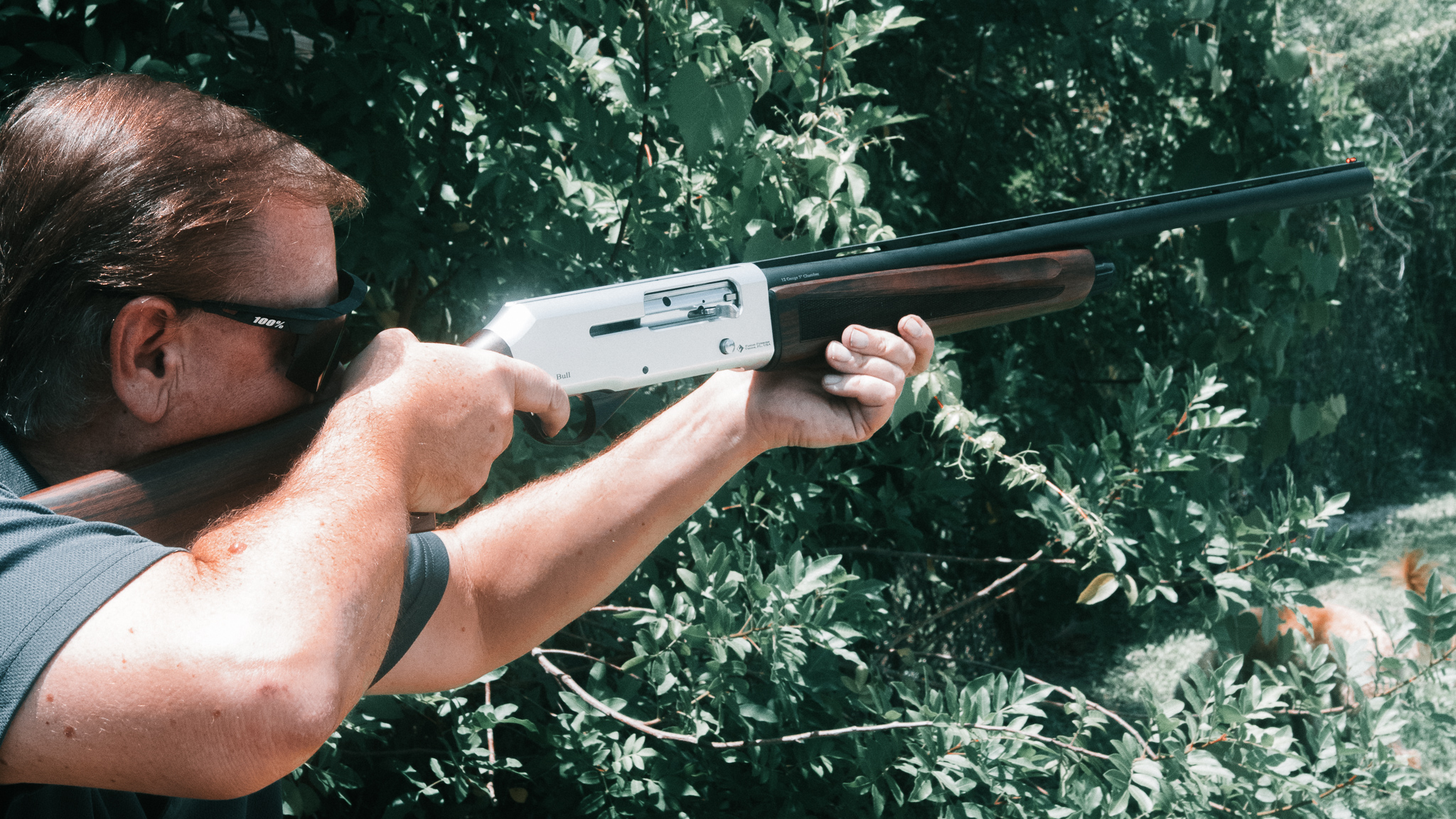

Pump-Action Shotguns
While pump-action shotguns have their advantages, it's important to note that they are not considered the most ideal option for trap shooting. However, they do offer certain benefits and can be a viable choice, particularly for those on a budget or seeking a fun challenge. In this section, we will explore why pump-action shotguns may not be the optimal choice for trap shooting while acknowledging their affordability and the unique challenges they present.
Limitations for Trap Shooting:
Pump-action shotguns require manual action to cycle the next round, which can be a disadvantage in trap shooting. The manual operation introduces an extra step between shots, resulting in a slower rate of fire compared to semi-automatic shotguns. In a sport where speed and quick follow-up shots are crucial, the pump action may hinder the shooter's ability to engage targets rapidly and consistently.
Reloading Challenges:
Trap shooting competitions often involve high-volume shooting, with shooters needing to engage multiple targets in rapid succession. Pump-action shotguns require the shooter to manually work the pump to chamber a new round after each shot. Reloading can be a more time-consuming process compared to other shotgun types, potentially impacting shooting rhythm and overall performance.
Potential Interruption in Sight Picture:
The manual cycling of the action in pump-action shotguns may introduce movement that can momentarily interrupt the shooter's sight picture. Maintaining a clear and consistent sight picture is crucial for accurately tracking and breaking fast-flying clay targets in trap shooting. The slight disruption caused by working the pump can require extra effort and focus to quickly reacquire the target.
However, it's worth noting that pump-action shotguns do have their merits, particularly for those seeking a budget-friendly option or a fun challenge:
Affordability:
Pump-action shotguns are generally more affordable compared to other shotgun types, making them an accessible choice for trap shooters on a budget. They offer a reliable and functional platform at a lower price point, allowing enthusiasts to participate in trap shooting without breaking the bank.
Fun Challenge:
Operating a pump-action shotgun in trap shooting can provide a unique and rewarding challenge. The manual action requires shooters to develop precise pump technique, timing, and coordination to maintain shooting flow. Mastering the pump action can be a source of personal achievement and enjoyment, adding an extra layer of challenge to the sport.
In conclusion, while pump-action shotguns may not be the ideal choice for trap shooting due to limitations in speed and reloading, they offer affordability and can provide a fun challenge for those seeking a budget-friendly option or a unique shooting experience. It's important to consider your shooting goals, budget, and preferences when selecting a shotgun for trap shooting. Exploring different shotgun types and understanding their respective advantages and limitations will help you make an informed decision that aligns with your specific needs and enhances your enjoyment of trap shooting.


Additional Considerations:
While selecting the right shotgun type is crucial in trap shooting, several additional factors can greatly impact your overall performance. In this section, we will explore essential considerations beyond shotgun types that can enhance your trap shooting experience. We will cover topics such as barrel length and choke selection, sighting options, stock design, and recoil management techniques, providing valuable guidance and practical tips to optimize your performance on the trap field.
Barrel Length and Choke Selection:
The combination of barrel length and choke selection has a significant impact on shot pattern, spread, and effective range in trap shooting. Generally, longer barrel lengths ranging from 28 to 32 inches are preferred as they provide a longer sighting plane, aiding in target acquisition and consistent follow-through. Additionally, selecting the appropriate choke is crucial. Trap shooting typically requires tighter chokes, such as modified or full, to maintain a denser shot pattern at longer distances. However, it's important to experiment and find the specific barrel length and choke combination that works best for your shooting style and the specific trap discipline you're participating in.
Sighting Options:
The sighting system on your shotgun plays a crucial role in acquiring and tracking clay targets. There are various sighting options available, including bead sights and adjustable ribs. Bead sights are the most common sighting option, consisting of a simple metal or fiber optic bead at the end of the barrel. Adjustable ribs allow for fine-tuning of the sight picture, enabling precise adjustments for different target distances and flight paths. Experiment with different sighting options to find the one that provides a clear, consistent, and intuitive sight picture that works best for you.
Stock Design:
The stock of your shotgun plays a vital role in achieving a comfortable and consistent shooting position. A properly fitted stock that complements your body mechanics and shooting style can greatly improve your accuracy and control. Consider factors such as length of pull, drop at comb, and drop at heel when selecting or customizing your shotgun's stock. Additionally, adjustable stocks offer the advantage of tailoring the fit to your individual preferences, ensuring optimal shoulder placement and eye alignment. A well-designed stock that fits you well will promote stability, consistency, and reduced fatigue during prolonged shooting sessions.
Recoil Management Techniques:
Recoil management is crucial in maintaining accuracy and reducing shooter fatigue in trap shooting. Proper technique and equipment can help mitigate the effects of recoil. Techniques such as a firm and consistent shoulder mount, maintaining a relaxed grip, and following through the shot can aid in managing recoil. Additionally, recoil reduction devices such as recoil pads, weighted stocks, and muzzle brakes can help absorb and redirect recoil energy, resulting in improved shooting comfort and reduced muzzle rise.
Remember to experiment, practice, and adapt these considerations to find what works best for you. Trap shooting is a dynamic sport, and honing your equipment setup to your shooting style and preferences is key to achieving consistent and optimal performance.
In conclusion, beyond shotgun types, paying attention to additional considerations such as barrel length and choke selection, sighting options, stock design, and recoil management techniques can significantly impact your trap shooting performance. Selecting the right barrel length and choke combination, choosing a suitable sighting system, ensuring a well-fitted stock, and employing effective recoil management techniques will enhance your accuracy, consistency, and overall enjoyment of trap shooting. Continual experimentation and practice will help you fine-tune these aspects to optimize your performance on the trap field.
Conclusion
In conclusion, when considering the best shotgun options for trap shooting, over-and-under (O/U) and semi-automatic shotguns emerge as the top choices due to their inherent advantages. O/U shotguns offer precise point of impact, versatile choke options, and excellent balance, while semi-automatic shotguns provide rapid-fire capability, reduced recoil, and increased shot capacity. These features make O/U and semi-automatic shotguns highly suitable for trap shooting, providing shooters with the performance, reliability, and versatility needed to excel on the trap field.
However, it's important to note that pump-action shotguns, while not considered the most ideal option for trap shooting, offer their own unique benefits. Pump-action shotguns are known for their reliability, ease of maintenance, and cost-effectiveness. Choosing a pump-action shotgun can provide a fun challenge, as shooters must develop precise pump technique and timing, adding an extra layer of skill and coordination to the shooting experience. Additionally, pump-action shotguns are a budget-friendly option, making trap shooting accessible to a wider range of enthusiasts.
Ultimately, the choice of shotgun type for trap shooting depends on individual preferences, shooting style, and budget considerations. O/U and semi-automatic shotguns offer a combination of performance, reliability, and convenience that are well-suited for trap shooting. However, for those seeking an enjoyable challenge or an affordable option, pump-action shotguns can provide a fun and rewarding experience on the trap field.
Regardless of the shotgun type chosen, trap shooting offers a thrilling and rewarding sport that tests precision, focus, and timing. By understanding the various shotgun options, and considering additional factors such as barrel length, choke selection, sighting options, stock design, and recoil management techniques, shooters can optimize their trap shooting performance and make the most of their chosen shotgun. So whether you opt for an over-and-under, semi-automatic, or pump-action shotgun, the joy and excitement of trap shooting await, providing endless opportunities for growth, skill development, and camaraderie in the world of shotgun sports.


